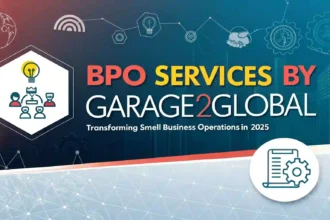With the business landscape becoming increasingly complex, understanding and managing relationships can be the key to success. Relationship mapping is a strategic approach that leverages insights about connections between stakeholders to drive better business outcomes. It can give companies an edge in customer retention, internal teamwork, and strategic partnerships. Keep reading to discover how to use relationship mapping.
Understanding Relationship Mapping in Business Contexts
Alt text: A black background with orange and green connected lines representing how to use relationship mapping.
In business, relationship mapping is the process of visualizing and understanding the web of relationships that influence your company’s success. It involves identifying key stakeholders, such as customers, employees, suppliers, and partners, and assessing the strength, influence, and objectives of each relationship. This understanding allows businesses to make informed strategic decisions and tailor their approach to each distinct entity.
Traditionally, relationship maps have been seen as sales tools, but their utility extends far beyond this. By providing a clear diagram of decision-makers and influencers, relationship maps help teams align their objectives with those of their stakeholders. This clarity ensures that efforts are directed where they will have the most impact, making resource allocation more strategic.
Having a relationship map also aids in identifying potential risks or issues within a network before they escalate. For instance, if an influential stakeholder is identified as being unsatisfied, measures can be taken to address their concerns promptly. Moreover, in navigating complex deals or negotiations, a comprehensive relationship map serves as a crucial guide.
Importantly, the benefits of relationship mapping are maximized when combined with a systematic approach, such as collecting data through CRM systems.
Implementing Relationship Mapping Techniques to Enhance Customer Engagement
Alt text: A group of four people looking at a screen showing how to use relationship mapping.
Customer engagement can be significantly enhanced through the thoughtful application of relationship mapping techniques. By charting out customers’ touchpoints and preferences, businesses can create personalized experiences that resonate. This results in stronger customer loyalty and can increase the likelihood of repeat business and referrals.
One aspect of this is identifying customer influencers and decision-makers who might not be direct contacts but have significant sway over purchasing decisions. By understanding these nuances, businesses can address customer needs more effectively. Furthermore, relationship mapping can reveal opportunities for upselling and cross-selling by highlighting connected needs that may not be evident through standard customer interactions.
Additionally, relationship mapping can guide the content and timing of engagement efforts. For instance, recognizing that a particular customer responds well to visual communication aids can shape the format of your marketing materials. Using these insights to tailor the customer journey ensures that engagement strategies are as impactful as possible.
Ultimately, the goal of implementing relationship mapping in customer engagement is to foster a deep understanding of each individual customer, their network, and their needs. Through this comprehensive perspective, businesses can create meaningful connections that translate to tangible business success.
Utilizing Relationship Maps for Improved Internal Team Dynamics
Internal team dynamics are another area where relationship mapping can yield significant benefits. By visually outlining the interactions and dependencies among team members, relationship maps can identify potential points of synergy or discord. This leads to more efficient collaboration and healthier workplace relationships.
Team leaders can use relationship maps to understand the informal networks that exist within their teams. These insights can help in delegating tasks according to each member’s strengths, influence, and connections with others, resulting in more cohesive project execution. Furthermore, when conflicts arise, a relationship map can provide context, making conflict resolution more targeted and effective.
Moreover, relationship mapping is instrumental in change management scenarios. When organizational changes occur, such as a merger or restructuring, having a clear visual aids employees in understanding their new roles, relationships, and the big picture of the altered organization. This can ease transitions and reduce resistance to change.
By making the underlying social structure of an organization apparent, relationship mapping can also uncover leadership potential within teams. Recognizing individuals who are central to internal networks can inform succession planning and talent management strategies, optimizing the company’s human capital assets.
Overall, relationship mapping serves as a versatile tool that can transform various facets of business operations and strategy. By capturing the nuances of stakeholder relationships, these visual guides empower businesses to make more informed decisions, foster stronger connections, and ultimately drive sustainable growth.

















